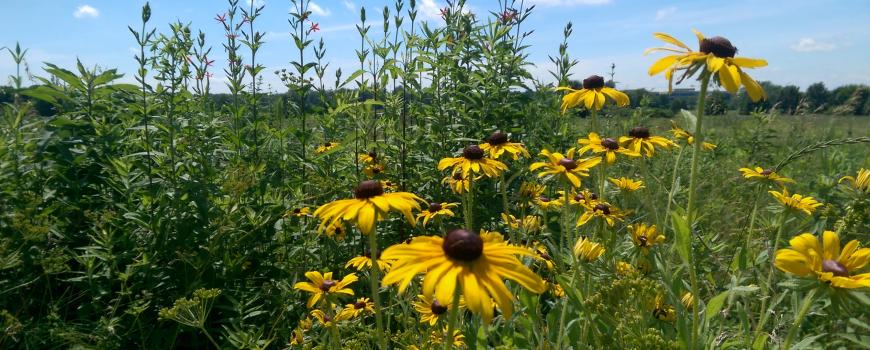The western 40 acres of Mount Saint John is an area that was formerly an agricultural field and orchard. Today it contains our forb, shrub and tree nurseries, an organic community garden and compost area, and created wetlands to catch runoff from around the buildings. Just below the Marianist novitiate building is a labyrinth for walking meditation with a mowed grass path and “walls” made of native prairie plants.
Look out over the field. We are beginning the process of restoration on this field of cool season grasses. The earliest land surveys of Mount St. John, conducted by Israel Ludlow for whom Ludlow Street in Dayton is named, show that prairies once existed in this field, which is part of the floodplain of the Little Beaver Creek. Over one hundred native oaks were planted in the field, creating savanna-like conditions (savannas are prairie grasslands with occasional oak trees that resist fire).
We only mow the field once each year. What is its value? Though it appears to be merely a grassy old field, look carefully around you and notice signs of wildlife. You may hear the red-winged blackbird, calling out to establish its territory (males are more noticeable with bright red and yellow wing-bars). Other ground-nesting birds are found here. Look above you or on the various perches in the field and you may see hawks or other birds of prey, a sure sign that the grassland is teeming with rodents such as moles, voles, shrews and mice. Countless soil and grassland invertebrates (animals without backbones such as insects, worms, spiders, slugs and snails) live on leaves, on the litter layer, and beneath the soil.
If you look carefully on the ground as you walk, you may notice signs of scat – the droppings of larger mammals. We have fox and coyotes at Mount St. John that journey to the front field at night to search out their prey, which includes birds and smaller mammals.





